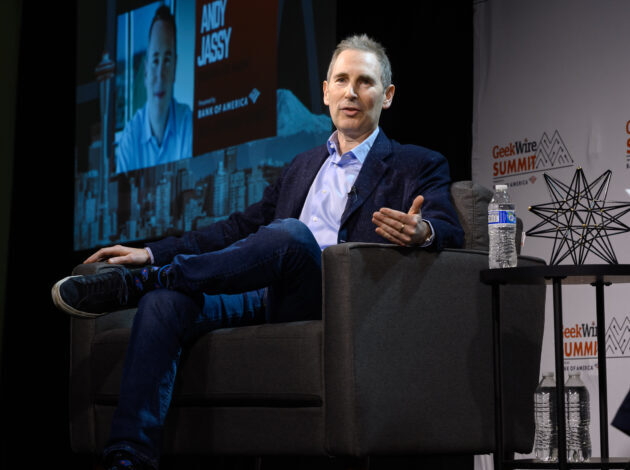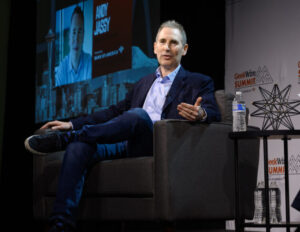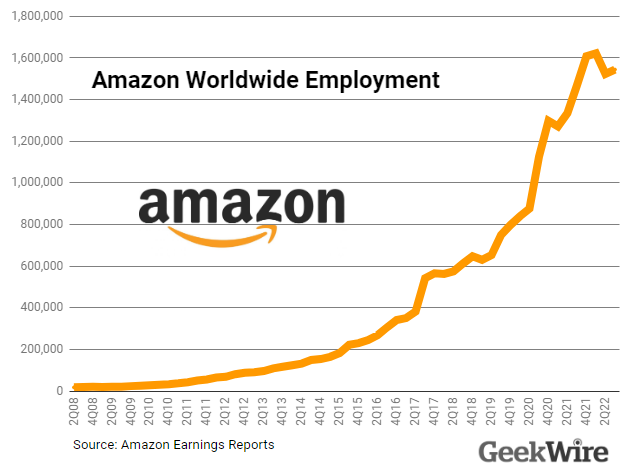Amazon to begin lay offs to begin a new way to simplify the business giant


“Invent and Simplify” is a leadership principle that Amazon CEO Andy Jassy said the company will apply not just to products but also to its own organization in a memo to employees.
Amazon, make thyself simpler.
This is the message that Amazon employees received from Andy Jassy on Wednesday, signaling a change in mindset that will have a big impact on the company’s future.
The CEO’s email is making headlines for officially quantifying Amazon’s layoffs — apparently days or weeks sooner than the company had planned. Jassy put it, alluding to the Wall Street Journal report that broke the news Wednesday afternoon.
In raw numbers, the 18,000-person layoff is the largest by any tech company in the past year and the biggest in Amazon’s history.
About 5% of Amazon’s 350,000 person corporate workforce were laid off. This sentence can be rewritten as:
The company’s overall base of 1.5 million employees includes warehouse workers, who will not be affected by these cuts.
The 18,000 number is more than the 10,000 previously reported; however, Amazon leaders insist that it’s not more than they previously planned because they were never targeting a specific number.
Amazon’s management structure fueled its growth, but it might be incompatible with best practices for corporate cutbacks. This will be discussed further in a moment.
The message is clear for those who remain: Amazon’s everything era is over.
“Invent and Simplify” are two of our leadership principles that we often talk about when discussing the creation of new products and features, Jassy wrote. He then went on to say that there will continue to be plenty of opportunity for this type of innovation across all the businesses we’re pursuing.
In spite of this, the Amazon CEO wrote that they “sometimes overlook the importance of the critical invention, problem-solving, and simplification that go into figuring out what matters most to customers (and the business), adjusting where we spend our resources and time, and finding a way to do more for customers at a lower cost (passing on savings to customers in the process).”
“Both of these types of Invent and Simplify really matter,” he explained.
Amazon is not like Thoreau, and keeping its accounts on a thumbnail would be impractical. Although the sentiment is the same, the words are different. “The philosopher wrote that life is frittered away by detail.” “Keep it simple, stupid!”
What does this mean for Amazon, in practice?
We’ve gotten a preview over the past few months as the company has trimmed back and eliminated products, services, and entire businesses – its Scout neighborhood delivery robots, its Amazon Care primary healthcare business, bricks-and-mortar Amazon bookstores, and others.
In his latest memo, Jassy explained the cutbacks by saying that the company’s annual business review this year has been more difficult due to the uncertain economy, and that they have hired rapidly over the last several years.
In a memo from November, Jassy listed some of the businesses where Amazon will continue to focus, citing “big opportunities ahead” in Amazon Stores (formerly Amazon Consumer), Advertising, Amazon Web Services, Prime Video, Alexa, Project Kuiper (satellite internet), Zoox (robo-taxis), and Amazon Healthcare.
John Rossman, a former Amazon executive who has written several books about the company, advocates a “zero-based” approach in which every Amazon initiative and project would be justified from scratch.
It’s clear that Amazon will need to be more selective in pursuing the elusive fourth pillar of its business, making strategic bets without the luxury of spreading its chips across the board, no matter how far the reset goes.

The “Highlights” section of Amazon’s quarterly earnings release is a good litmus test. The length of this rundown has increased dramatically in recent years, surpassing 2,300 words across four sections and 39 bullet points for the third quarter of 2022 — more than three times its length a decade earlier.
The independence that Amazon gives its business leaders, known internally as “single-threaded leadership,” has contributed to the company’s sprawling corporate structure.
As former Amazon execs Colin Bryar and Bill Carr wrote in their 2021 book, “Working Backwards,” under this approach, a “single person, unencumbered by competing responsibilities, owns a single major initiative and heads up a separable, largely autonomous team to deliver its goals.”
The autonomy is the reason why it was difficult to pin down the number of job cuts.
According to Amazon, there was no specific target for cutbacks. “Leaders across the company have been working with their teams and looking at their workforce levels, investments they want to make in the future, and prioritizing what matters most to customers and the long-term health of our businesses,” Jassy wrote instead.
Single-threaded leadership is a big part of Amazon’s success. However, a slow rollout of layoffs can also create a paralyzing sense of fear across a workforce, as questions linger for weeks or months about who and what will survive. The mantra of corporate cost-cutters is “cut once, cut deep, and be done with it.”
Amazon’s new reality might not match its past approach.





